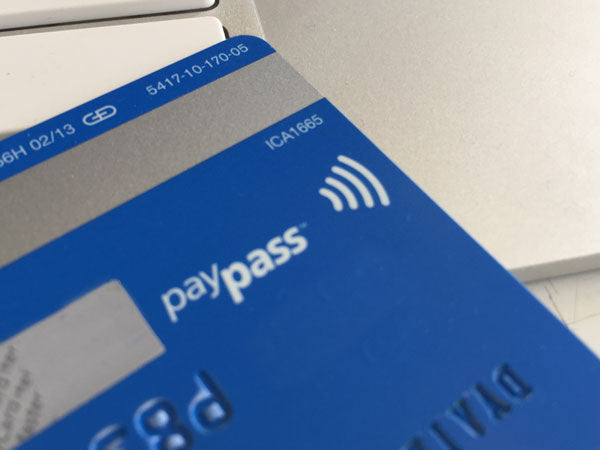
I introduced the RFID blocking option to our entire collection based on many requests for this functionality. Lots of customers choose this option, but others have noticed it and wondered what RFID is and whether they need a wallet to block it. I’m not going to try to convince you to get it, just explain what it is as best I can so you can decide.
Here's a brief explanation and answers to the most common questions...
What Does RFID Stand For?
RF stands for Radio Frequency and ID is Identification. It’s basically a way of transmitting information over the air between objects. There are a wide variety of applications for the technology, but the main ones are payments, identification, and building access badges.
If you have a credit card with PayPass or something similar, then it has the capability to transmit its information if placed near one of these readers. The concern is that it’s easy to get small readers which can be used by someone to get close to you and “skim”(rfid skimming) the information from your card, without ever taking your wallet out of your pocket. In fact, many mobile devices can read this info.
RFID Protection: What You Need it For
More recently, personal information has also begun to be embedded into RFID-enabled IDs. Cards from Washington, Michigan, New York, Vermont, and Canada all contain RFID chips with personal information. I don’t know whether the information can be actually stolen this way (they should have encryption, etc.) but many people who have these cards would prefer to prevent the information from being able to be transferred.
Probably the most common use for RFID cards is for building access. It’s convenient and fairly secure to have employees badge in to buildings, elevators, and rooms. I’ve worked in places where you need to swipe your badge to go through every almost door! So it certainly is convenient to be able to badge through these doors without taking your badge out of your wallet… or even your wallet out of your pocket if it’s at the right height.
RFID Blocking Wallets & Card Sleeves: Do They Work?
The blocking in SlimFold RFID wallets blocks the frequencies typically found in payment, identification, and transit cards (13.56 MHz and above). It only blocks the building access cards if they also works on these same frequencies. Most people seem to want to block their payment cards through their wallets while still using building access cards- and that’s usually the case.
And if your building access cards are blocked, the RFID inserts in the MICRO can actually be removed and put back in. That lets you add RFID protection if you go on a trip or something. (The RFID blocking material in the Original models are sewn in, however.)
Your other alternative is to get a non-RFID blocking wallet and then use the RFID card sleeves to protect just the cards that have chips.
So do you need RFID? The actual risk is probably not that high… and it of course depends on a lot of things like the risk factors of where you live and the cards you have. But I hope this helps clear up what the blocking feature is to help you decide. Feel free to reach out with any questions!
FAQ
Does it make the wallet thicker or heaver?
Nope! Unlike some wallets that include bulky or heavy material, I use a patented alloy/Tyvek laminate. This results in the Tyvek models being the thinnest RFID blocking wallets in the world.
Will my building access badge work through it?
Probably but it depends on the frequency it uses. I’ve been finding that it tends to attenuate the signal of building access cards, making you need to get a bit closer to use them, but that it still works. Meanwhile, it will block payment, ID, and transit cards. If that’s a deal breaker, you can order both versions and then send back one of them.
Is the protection removable?
For the MICRO, yes. For the Original, no.
Will my train/bus pass work through it?
Probably not. Some folks have experimented with the placement of the card by putting it between the RFID blocking material and the outer layer of the wallet, but I haven’t heard definitive results about that yet. If you try it, please let me know how it works for you!

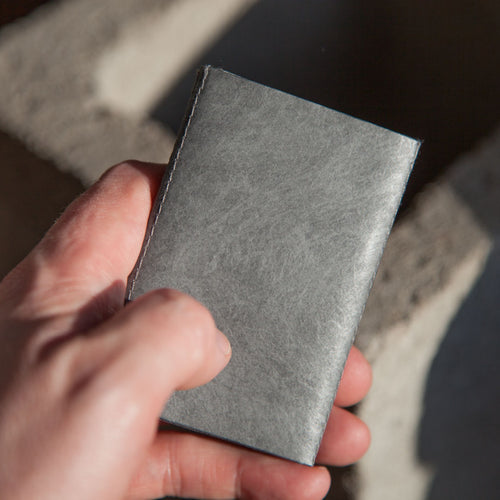
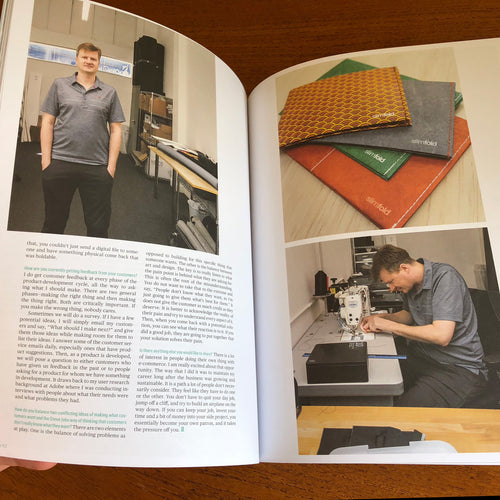
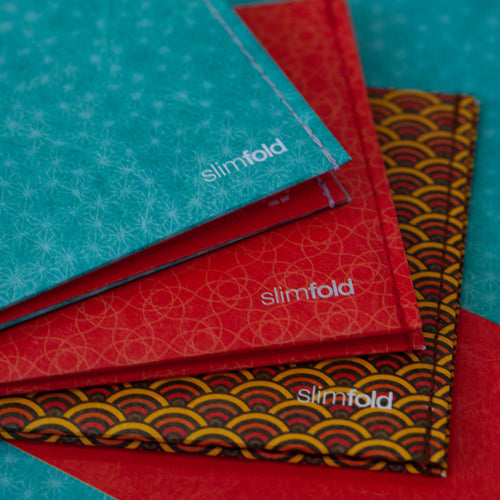
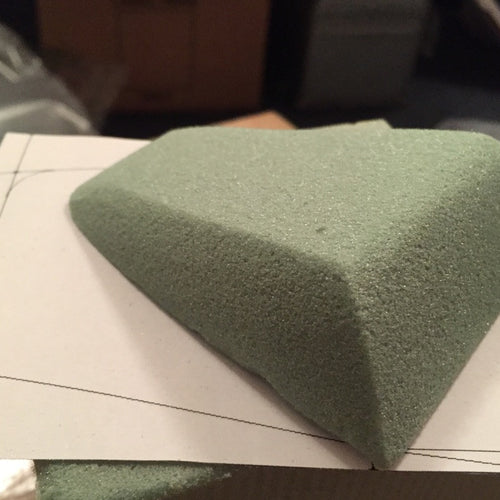
Check out this awesome RFI wallet which is a short-distance electro-magnetic method for transmitting small bits of data, and help you protect yourself from ID theft. https://www.amazon.com/Credit-COCASES-Blocking-Leather-Capacity/dp/B07D52PJ2R
@Aaron – Yep! That’s the RFID blocking piece. It doesn’t add to the thickness but as you can tell it is effective. Right, the plastic is just for rigidity. I think the transit ones tend to be pretty weak so that’s probably why it didn’t work. You could try increasing the distance between the transit card and the blocking material with an extra credit card or two… or putting the blocking material in the money pocket. That may give the transit card enough room behind it to activate.
Can you please tell us exactly what does the RFID blocking piece look like? In my Soft Shell Micro there is a black piece of paper and a clear piece of plastic inserted into the backs of both sides – I assume the paper is the RFID blocking material and the plastic is just for rigidity… right?
I have tried inserting my train card into the back of that section behind the piece of paper, i.e. the only thing between the card and the reader is one soft shell material. But it still won’t work on the reader. It isn’t a distance thing because this used to work with my old leather wallet.